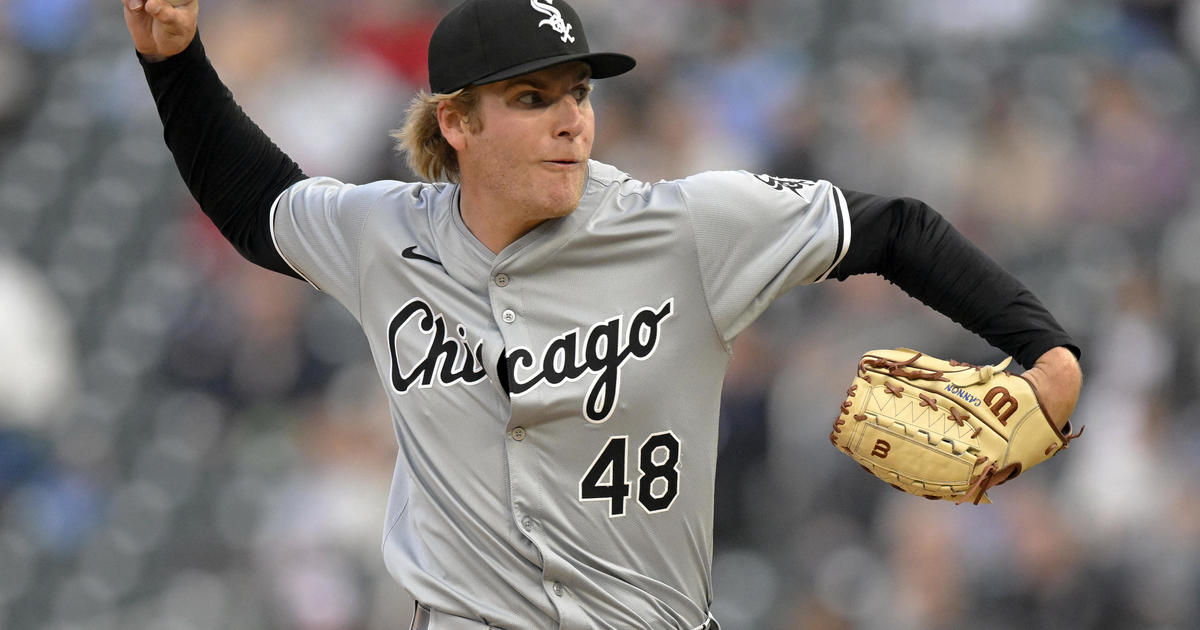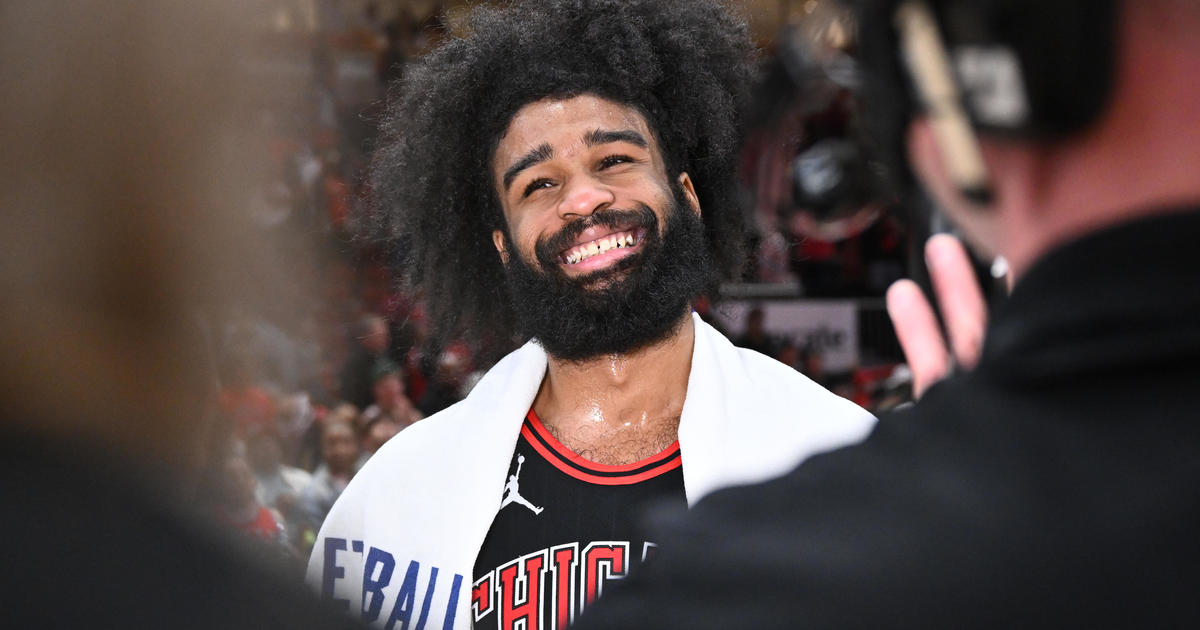Angi: White Sox Need Well-Rounded Roster In Rebuild
By Cee Angi-
(CBS) Hawk Harrelson, White Sox announcer and king of both hyperbole and tantrum, made what seemed to be an awfully pathetic statement during Monday's game against the Yankees.
He said, in a voice that made it clear he was simultaneously shaking and hanging his head, that the fourth inning of this game was the most embarrassing he's ever called.
If you didn't see the inning, it'd be easy to write it off as one of Hawk's tall tales, much like the lore of his bosom-buddy days with Carl Yastrzemski and the estimated distances of Adam Dunn home runs, but in this instance, the suggestion that it was the most embarrassing wasn't just an emotionally-charged pity-party for the "good guys"—it might have actually been the worst inning in his 38 year broadcasting career.
It would at least be in the top ten.
The Yankees went to the plate 13 times that inning and had seven hits, which is embarrassing enough on its own, but the feeling of humiliation was exacerbated by a weak defense and silly errors that made the whole experience painful, unbelievable, and, yes, the most embarrassing.
Some of it seemed unavoidable—it wasn't Dylan Axelrod's fault he couldn't handle a ball that was hit sharply back at him, and while a more competent defender might have been able to prevent a run on a Mark Reynolds' hot shot to third base, the fact that Conor Gillaspie couldn't wasn't so much an error as an expression of his limitations. But as pinstripe after pinstripe entered the batters' box, there was a sense of not impending doom, but of the actual arrival of doom, not of What Next? but of What could be worse than this?
The answer was soon in coming: the "worse" was the errors. Josh Phegley dropped an easy pop-up in foul territory, and in his second plate appearance of the inning, Vernon Wells hit a grounder which Adam Dunn fielded at first, and his terrible throw to second base allowed two runs to score. With a chance to end the inning on a Granderson hit to short stop, Alexei Ramirez flipped to the ball to Gordon Beckham, who made an inexplicably lazy throw to first and Granderson reached safely. Giving up hits is one thing—and there were a lot of them that inning as well—but errors, mental mistakes, and poor defense? Just another layer of mediocrity that's killing the Sox this season.
As exemplified by innings like that one on Monday, the defense seems much worse than it was last year, and the defensive metrics agree. While metrics like Defensive Runs Saved (DRS) and Ultimate Zone Rating (UZR), which attempt to quantify just how good players are (or in this case, aren't) with their gloves have some limitations because there's an element of subjectivity in how they are calculated, they are useful approximations of the performance on the field.
According to DRS, which rates plays on a simple plus/minus basis, then counts the number of runs a player saved or cost his team when compared with the average player, the White Sox are ranked 27th in the league—by this method it's estimated their defense cost them 49 runs this season, a huge swing from last season when the same metric estimated that they saved eight runs over the course of the season.
Not only will the bad defense give Hawk a premature heart attack, allowing more runs means losing more games. That might seem obvious, but think about it this way: Given their current offensive production (which has been abysmal, as you already know), if they matched last season's defensive production of +8 runs instead of -49, they'd have roughly a .479 winning percentage, an improvement over their current record by 10 games. While that wouldn't be enough to erase the 20.0 game deficit in the Wild Card race, it would certainly have them closer and might have changed the way the team approached the rebuild process—but then, if that were the case we'd be talking about a different team than the White Sox have right now, a better one. Defense is as crucial a problem for this team as its lack of offense. In fact, they go hand in hand.
There is no lone culprit that's costing the White Sox all of those runs. According to DRS, Alejandro De Aza (-17) has been the worst, a score he ran up due to a combination of poor range and fielding problems. Adam Dunn (-12) is next, which shouldn't come as a surprise; there's a good chance that he dethrones Gary Sheffield as the worst defensive player in history (as measured by career dWAR) before the season ends. This is one of the defensive problems that's most easily addressed: Dunn has been forced to play in the field more often as Paul Konerko deals with a back injury. Acquiring a first baseman, or trying Dayan Viciedo at the position, who will let Dunn DH most of the time has to be a goal for the offseason (and is an argument for not retaining Paul Konerko, even if he wants to come back).
Aside from Alexei Ramirez and Gordon Beckham, who get good grades when it comes to their defensive ability despite both having an uptick in errors this season, the majority of the position players that the Sox have used this season have been mediocre and in some cases, awful players that have cost the team runs.
The truth is, teams can win with weak defenses, and some of them are even doing it this season. While the three teams that rank worse than the White Sox in DRS this season— the Angels, Phillies, and Mariners—won't be making the playoffs, the three teams just above them have a good chance of making the postseason. The Cardinals', Tigers', and Athletics' defenses have cost their respective teams fewer runs than the Sox' defense has, but their run production and pitching depth can run circles around Chicago's, so they win in spite of their flaws.
The Cardinals, Tigers, and especially Athletics have been good this year, but they don't have rosters stacked with pedigreed five-tool players—they have great overall depth of talent, but few players that are stars in all aspects of the game. What these teams have managed to do is find the right balance of strong-suits, taking the good, forgiving the bad, and getting the mix right.
Miguel Cabrera has cost the Tigers roughly 16 runs more than the average glove on defense this season, but he's also 48 runs above average on offense, which is a wide enough margin to forgive that, aside from the occasional web gem, he plays defense like he's sitting in a recliner. The Tigers have found that balance with their other players, as well. Torii Hunter isn't winning gold gloves anymore, but he's hitting .304/.337/.469 with 16 home runs, and Andy Dirks has been sharp defensively, saving nine runs according to DRS, but has never been much of a hitter, and of course their entire roster is helped by the best starting pitching depth in the league.
It's not the pitching, the hitting, or the defense alone that has killed the Sox this season—it's that you can't be average or worse in everything and still win games. The coming rebuild presents some lofty challenges for the White Sox, but the number one goal is to find the right mix of players that can balance the lineup so that there's some protection for slumps and struggles built in.
Other teams, even those with small payrolls, are proving that it's not necessary to find complete players without weaknesses; it's just about approximating it by combining enough parts to make a complete and well-rounded roster.
Cee Angi is a freelance sportswriter, whose work has appeared at Baseball Prospectus, The Platoon Advantage, The Classical, and is currently one of SB Nation's featured columnists covering Major League Baseball. Follow her on Twitter @CeeAngi and read more of her CBS Chicago blog entries here.




